-
 Bitcoin
Bitcoin $107,925.2701
-1.48% -
 Ethereum
Ethereum $2,497.5244
-3.00% -
 Tether USDt
Tether USDt $1.0003
0.00% -
 XRP
XRP $2.2210
-1.77% -
 BNB
BNB $652.7259
-0.99% -
 Solana
Solana $146.3621
-3.35% -
 USDC
USDC $0.9999
0.01% -
 TRON
TRON $0.2831
-0.98% -
 Dogecoin
Dogecoin $0.1624
-5.00% -
 Cardano
Cardano $0.5691
-4.05% -
 Hyperliquid
Hyperliquid $38.3575
-4.92% -
 Sui
Sui $2.8509
-4.98% -
 Bitcoin Cash
Bitcoin Cash $486.3924
-2.09% -
 Chainlink
Chainlink $13.0606
-4.57% -
 UNUS SED LEO
UNUS SED LEO $9.0490
0.29% -
 Avalanche
Avalanche $17.6631
-4.58% -
 Stellar
Stellar $0.2379
-1.47% -
 Toncoin
Toncoin $2.7722
-3.33% -
 Shiba Inu
Shiba Inu $0.0...01132
-4.45% -
 Litecoin
Litecoin $87.0042
-2.80% -
 Hedera
Hedera $0.1535
-3.40% -
 Monero
Monero $315.6490
-1.97% -
 Dai
Dai $0.9999
0.00% -
 Polkadot
Polkadot $3.3326
-5.82% -
 Ethena USDe
Ethena USDe $1.0001
0.00% -
 Bitget Token
Bitget Token $4.3957
-3.76% -
 Uniswap
Uniswap $6.9049
-9.33% -
 Pepe
Pepe $0.0...09601
-3.89% -
 Aave
Aave $262.2817
-6.10% -
 Pi
Pi $0.4718
-4.35%
Why does NFT ensure the uniqueness of digital assets?
NFTs ensure uniqueness through blockchain tech, unique IDs, and metadata, revolutionizing digital art and collectibles markets with verifiable ownership and authenticity.
May 01, 2025 at 06:07 pm
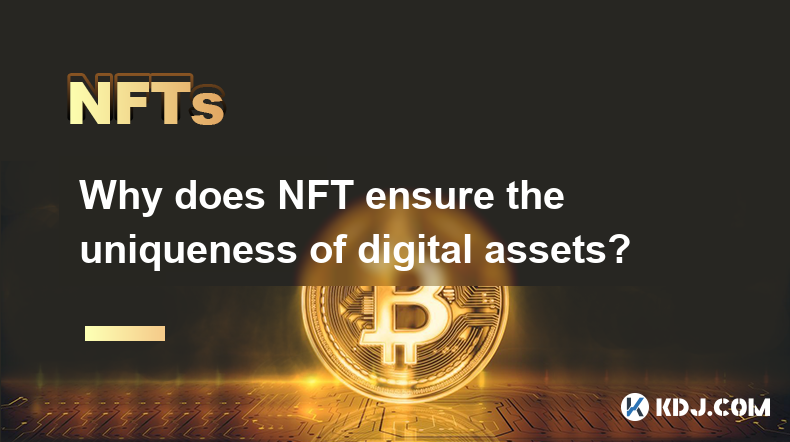
NFTs, or Non-Fungible Tokens, have revolutionized the world of digital assets by providing a unique way to prove ownership and authenticity. The uniqueness of NFTs stems from their underlying technology and structure, which ensures that each token is distinct and cannot be replicated or exchanged on a one-to-one basis with another token. This article delves into the reasons why NFTs ensure the uniqueness of digital assets, exploring the technical aspects, the role of blockchain, and the impact on the digital art and collectibles market.
The Role of Blockchain Technology
Blockchain technology is at the heart of NFTs' uniqueness. Each NFT is minted on a blockchain, which serves as a decentralized ledger that records all transactions and ownership details. The most commonly used blockchains for NFTs are Ethereum, Binance Smart Chain, and Flow, among others.
- Decentralization: Unlike traditional centralized databases, blockchain is maintained by a network of nodes, making it nearly impossible to alter or manipulate the data once it's recorded.
- Immutable Records: Once an NFT is minted, its details are permanently etched into the blockchain, ensuring that the token's history and ownership cannot be tampered with.
- Smart Contracts: NFTs are often created using smart contracts, which are self-executing contracts with the terms directly written into code. These contracts manage the creation, ownership, and transfer of NFTs, ensuring that each token adheres to predefined rules.
Unique Identifiers and Metadata
Each NFT is assigned a unique identifier, typically in the form of a token ID. This identifier, combined with the address of the smart contract that created the NFT, makes each token distinct.
- Token ID: This is a unique number assigned to each NFT within a specific smart contract. No two NFTs within the same contract can have the same token ID.
- Metadata: NFTs also contain metadata, which can include information about the asset such as its name, description, and a link to a digital file (e.g., an image or video). This metadata is stored on the blockchain or in decentralized storage solutions like IPFS (InterPlanetary File System).
Non-Fungibility
The term "non-fungible" means that NFTs cannot be exchanged on a like-for-like basis with another token. This is in contrast to fungible tokens like Bitcoin or Ethereum, where one unit is equivalent to another.
- Distinct Value: Each NFT has its own value, which can be influenced by factors such as rarity, the reputation of the creator, and market demand.
- Ownership and Scarcity: By ensuring that each NFT is unique, blockchain technology helps to create a sense of scarcity, which can drive up the value of digital assets.
Use Cases and Impact on Digital Art and Collectibles
NFTs have had a significant impact on the world of digital art and collectibles. Artists and creators can now tokenize their work, ensuring that each piece is unique and verifiable.
- Digital Art: Artists can mint their digital artworks as NFTs, allowing them to sell their work directly to collectors. Platforms like OpenSea, Rarible, and SuperRare have become popular marketplaces for digital art NFTs.
- Collectibles: From virtual trading cards to in-game items, NFTs have created new opportunities for collectors. Projects like CryptoKitties and NBA Top Shot have demonstrated the potential of NFTs in the collectibles market.
- Music and Media: Musicians and filmmakers can also use NFTs to sell exclusive content, such as limited-edition albums or behind-the-scenes footage, directly to fans.
Verification and Provenance
One of the key benefits of NFTs is the ability to verify the authenticity and provenance of digital assets. This is particularly important in the art world, where provenance can significantly impact the value of a piece.
- Authenticity: By recording the creation and ownership history on the blockchain, NFTs provide a verifiable record of authenticity. This helps to combat issues like forgery and unauthorized duplication.
- Provenance: The blockchain record also serves as a detailed history of the asset's ownership, which can be traced back to the original creator. This transparency can increase trust and confidence among buyers and collectors.
Challenges and Considerations
While NFTs offer many benefits in terms of uniqueness and authenticity, there are also challenges and considerations to keep in mind.
- Environmental Concerns: The energy consumption associated with some blockchains, particularly Ethereum, has raised environmental concerns. However, the transition to more energy-efficient blockchains and the adoption of layer-2 solutions are addressing these issues.
- Market Volatility: The value of NFTs can be highly volatile, influenced by factors such as market trends, celebrity endorsements, and speculative buying. This volatility can pose risks for buyers and sellers.
- Regulatory Uncertainty: The regulatory landscape for NFTs is still evolving, with different jurisdictions taking varied approaches to the classification and taxation of these assets.
Frequently Asked Questions
Q: Can NFTs be duplicated or copied?
A: While the digital file associated with an NFT can be copied, the NFT itself cannot be duplicated. The token ID and metadata stored on the blockchain ensure that each NFT is unique and verifiable.
Q: How do NFTs affect copyright and intellectual property rights?
A: Owning an NFT does not automatically grant the buyer copyright or intellectual property rights to the underlying asset. These rights remain with the original creator unless explicitly transferred. However, NFTs can serve as a tool for creators to monetize their work while retaining control over their IP.
Q: Are there any fees associated with creating and trading NFTs?
A: Yes, there are typically fees associated with minting, buying, and selling NFTs. These can include gas fees on the blockchain, platform fees, and royalties for the creator. The specific fees can vary depending on the blockchain and marketplace used.
Q: Can NFTs be used for physical assets?
A: Yes, NFTs can be used to represent ownership of physical assets. For example, a physical artwork can be tokenized as an NFT, with the token serving as a digital certificate of ownership. However, the practical implementation and legal implications of using NFTs for physical assets can be complex and require careful consideration.
Disclaimer:info@kdj.com
The information provided is not trading advice. kdj.com does not assume any responsibility for any investments made based on the information provided in this article. Cryptocurrencies are highly volatile and it is highly recommended that you invest with caution after thorough research!
If you believe that the content used on this website infringes your copyright, please contact us immediately (info@kdj.com) and we will delete it promptly.
- Bitcoin's Pattern Break: Are HODLers the Key to the Next Surge?
- 2025-07-04 18:50:12
- Bitcoin Price, Trump's Bill, and the $150K Dream: A NYC Take
- 2025-07-04 19:50:12
- Ethereum, LILPEPE, and the July Bounce: Will Pepe Steal ETH's Thunder?
- 2025-07-04 19:10:12
- Binance Institutional Loans: Unlocking 4x Leverage and Zero Interest for Whales
- 2025-07-04 19:15:12
- Bitcoin Bull Run: Analysts Eye Peak in Late 2025?
- 2025-07-04 19:20:13
- Pepe Indicators, Bullish Forecast: Can the Meme Coin Rally?
- 2025-07-04 19:25:12
Related knowledge
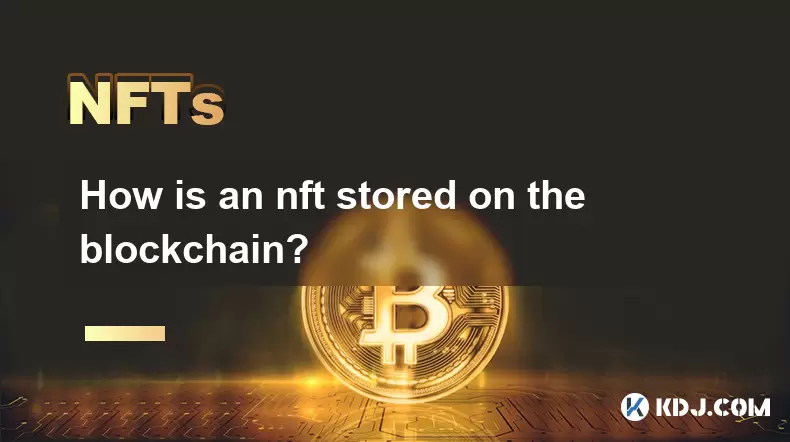
How is an nft stored on the blockchain?
Jul 01,2025 at 04:07am
How Is an NFT Stored on the Blockchain?Non-Fungible Tokens (NFTs) have revolutionized how digital assets are owned, verified, and transferred. Understanding how an NFT is stored on the blockchain provides clarity on its uniqueness, immutability, and traceability. Understanding the Basic Structure of an NFTAn NFT is a unique token that represents ownersh...
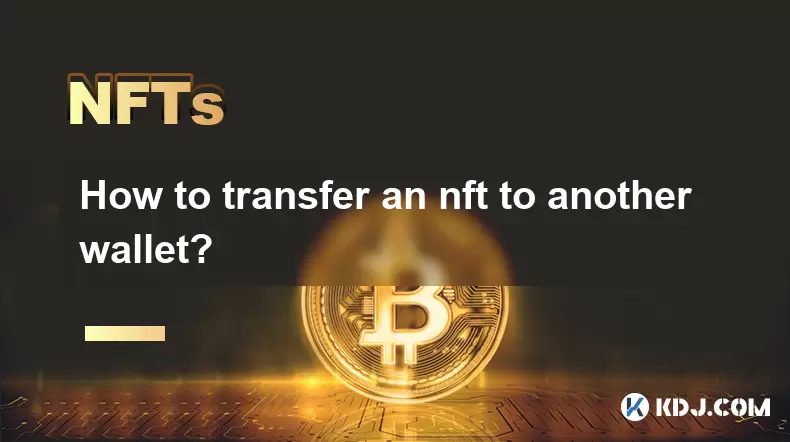
How to transfer an nft to another wallet?
Jul 01,2025 at 10:21am
Understanding the Basics of NFT TransfersTransferring an NFT (Non-Fungible Token) from one wallet to another is a common operation in the blockchain space. Before proceeding, it's crucial to understand what an NFT represents: a unique digital asset stored on a blockchain, typically Ethereum or other compatible chains like Binance Smart Chain or Solana. ...
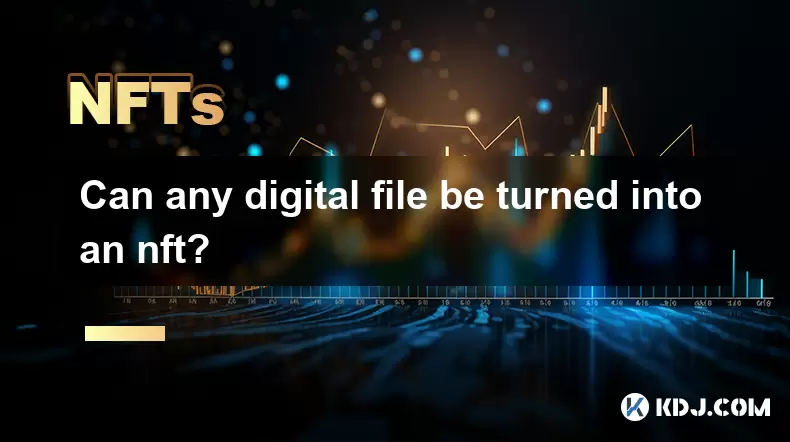
Can any digital file be turned into an nft?
Jul 01,2025 at 07:00am
Understanding the Concept of NFTsAn NFT (Non-Fungible Token) is a unique digital certificate of ownership stored on the blockchain. Unlike cryptocurrencies such as Bitcoin or Ethereum, which are fungible and interchangeable, NFTs represent one-of-a-kind assets that cannot be replicated or replaced. These tokens can represent various types of digital fil...

What are the best nft analytics tools?
Jul 02,2025 at 03:49am
Understanding the Role of NFT Analytics ToolsIn the fast-evolving world of non-fungible tokens (NFTs), data-driven decisions are crucial for creators, investors, and collectors. NFT analytics tools serve as a bridge between raw blockchain data and actionable insights. These platforms aggregate information from various blockchains to offer detailed metri...

How to analyze an nft project's roadmap?
Jul 01,2025 at 12:01pm
What is an NFT Project Roadmap?An NFT project roadmap serves as a strategic plan outlining the development goals, milestones, and timelines for a non-fungible token initiative. It typically includes short-term and long-term objectives, key deliverables, team updates, partnerships, and community engagement strategies. A well-structured roadmap helps inve...
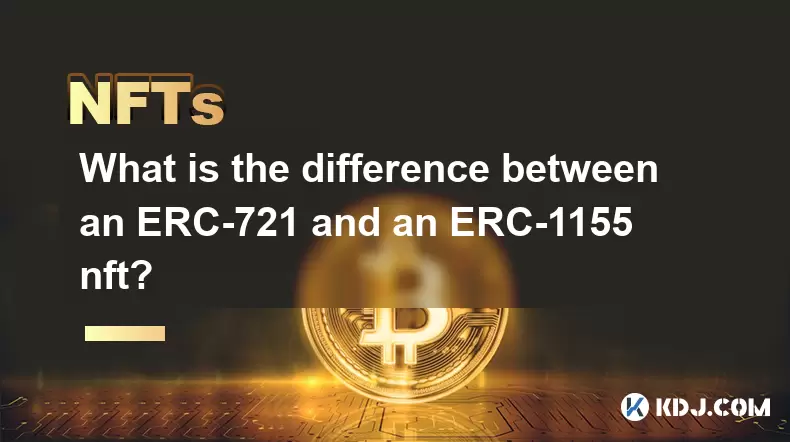
What is the difference between an ERC-721 and an ERC-1155 nft?
Jul 02,2025 at 08:28am
Understanding the Basics of NFT StandardsTo fully grasp the difference between ERC-721 and ERC-1155, it’s essential to understand what an NFT standard is. In the Ethereum ecosystem, standards like ERC-721 and ERC-1155 define how non-fungible tokens (NFTs) are created, managed, and transferred. These standards ensure interoperability across platforms, wa...

How is an nft stored on the blockchain?
Jul 01,2025 at 04:07am
How Is an NFT Stored on the Blockchain?Non-Fungible Tokens (NFTs) have revolutionized how digital assets are owned, verified, and transferred. Understanding how an NFT is stored on the blockchain provides clarity on its uniqueness, immutability, and traceability. Understanding the Basic Structure of an NFTAn NFT is a unique token that represents ownersh...

How to transfer an nft to another wallet?
Jul 01,2025 at 10:21am
Understanding the Basics of NFT TransfersTransferring an NFT (Non-Fungible Token) from one wallet to another is a common operation in the blockchain space. Before proceeding, it's crucial to understand what an NFT represents: a unique digital asset stored on a blockchain, typically Ethereum or other compatible chains like Binance Smart Chain or Solana. ...

Can any digital file be turned into an nft?
Jul 01,2025 at 07:00am
Understanding the Concept of NFTsAn NFT (Non-Fungible Token) is a unique digital certificate of ownership stored on the blockchain. Unlike cryptocurrencies such as Bitcoin or Ethereum, which are fungible and interchangeable, NFTs represent one-of-a-kind assets that cannot be replicated or replaced. These tokens can represent various types of digital fil...

What are the best nft analytics tools?
Jul 02,2025 at 03:49am
Understanding the Role of NFT Analytics ToolsIn the fast-evolving world of non-fungible tokens (NFTs), data-driven decisions are crucial for creators, investors, and collectors. NFT analytics tools serve as a bridge between raw blockchain data and actionable insights. These platforms aggregate information from various blockchains to offer detailed metri...

How to analyze an nft project's roadmap?
Jul 01,2025 at 12:01pm
What is an NFT Project Roadmap?An NFT project roadmap serves as a strategic plan outlining the development goals, milestones, and timelines for a non-fungible token initiative. It typically includes short-term and long-term objectives, key deliverables, team updates, partnerships, and community engagement strategies. A well-structured roadmap helps inve...

What is the difference between an ERC-721 and an ERC-1155 nft?
Jul 02,2025 at 08:28am
Understanding the Basics of NFT StandardsTo fully grasp the difference between ERC-721 and ERC-1155, it’s essential to understand what an NFT standard is. In the Ethereum ecosystem, standards like ERC-721 and ERC-1155 define how non-fungible tokens (NFTs) are created, managed, and transferred. These standards ensure interoperability across platforms, wa...
See all articles

























































































